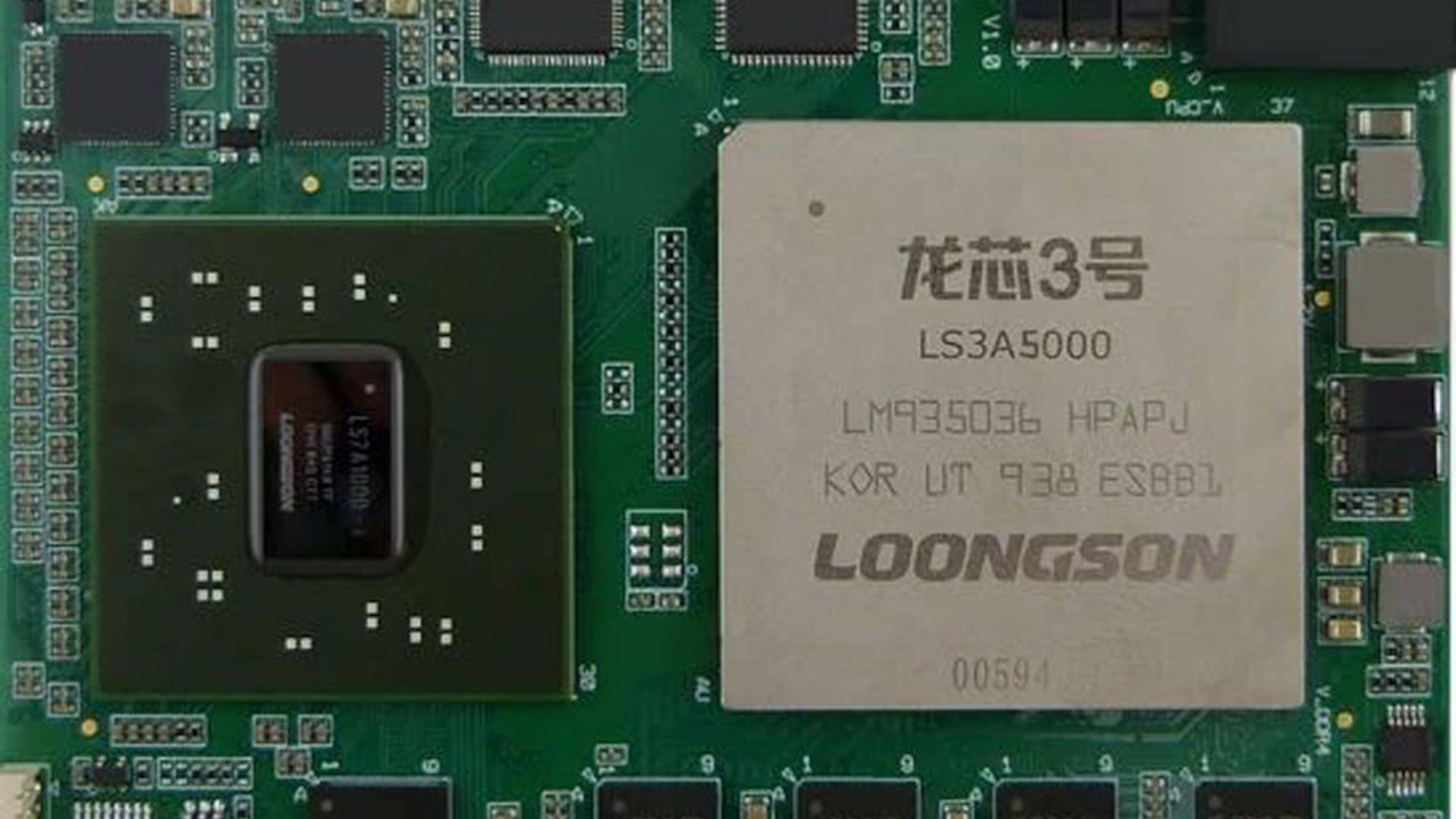
The Loongson 3A5000 CPU is a new Chinese designed MIPS based CPU that is making some big performance promises, but software could be its Achilles heel.
For the second time in as many weeks, another new type of CPU, the Loongson 3A5000, has been announced. By “new type,” what I'm talking about here is something that doesn’t run the same code as Intel or ARM designs, but we wouldn’t be discussing it if it didn’t have at least the potential to go about as fast as fairly modern workstation CPUs from the big names.
As with the recent development of XiangShan, which seems intended to compete with ARM designs, the organisation behind Loongson is the Institute of Computing Technology at the Chinese Academy of Sciences, based in Beijing. The commercial part of the project, an organisation called BLX IC Design, has been working on Loongson-branded chips since at least 2010. While the intent here seems to be to create application-grade processors suitable for desktops or workstations, the performance per watt hasn’t kept up with Intel’s finest, and they have to date offered the MIPS instruction set. MIPS, in the form of R-series microprocessors, has some historical fame as the brain of several then-beefy Silicon Graphics workstations, as well as DEC’s DECStation and others.
MIPS instruction set
Choosing the MIPS instruction set meant paying licensing fees to MIPS. Given the increasing remoteness of MIPS’ heyday and the size of the Intel market, it might be more instinctive idea to build Intel-compatible CPUs, even though it’s far from obvious that Intel’s approach is actually the best way to engineer a general-purpose microprocessor system in 2021. MIPS is probably more licensable, if only because the eponymous company has been struggling through a series of spinoffs, buyouts and a bankruptcy; more to the point, it might actually be better, or at least easier to implement, in a high-performance CPU. MIPS itself ended development of its microarchitecture in March this year, in favour of RISC-V, although that’s really too recent a change to have influenced a high-end microprocessor discussed right now.
You might also like:
- RISC-V based XiangShan processor poses another threat to Intel
- The global chip shortage: What's going on?
The latest Loongson (which means “Dragon Chip”) can run MIPS64 code, but seems not intended to be a pure MIPS device. Reportedly the Loongson 3A5000 is intended to avoid what’s been widely described as “foreign licensing,” a choice of words which might be seen as rather baldly nationalistic. Either way, it’ll be possible for BLX to build CPUs implementing the new architecture without paying anyone for their ideas, which presumably suits it from both a political and a commercial point of view.
Of course, anyone can come up with a microprocessor instruction set architecture; the challenge is to design something that’s both useful to software engineers and can be implemented in silicon in a way that can be manufactured at a reasonable cost, and run quickly without overheating. With that in mind, there’s nothing particularly special about Intel’s instruction set; it’s just the instruction set for which most of the world’s best software has been made and it’s possible to make affordable CPUs which implement that instruction set.
Actually, Intel’s power-consumption-to-performance ratio has long been looking slightly shaky in comparison to ARM, and it remains to be seen whether the company can fix that problem by improving its engineering, or whether the Intel instruction set is simply not amenable to implementation in low-power chips. As I discussed in the article on XiangShan, Intel’s foot-dragging on smaller process sizes and obsession with share buybacks in order to maintain its own stock price seems navel-gazing and counterproductive.
Conversely, no matter how good Loongson’s architecture is, it’s meaningless if there’s no software for it. Various Linux distros have run on MIPS-based variants in much the same way it’s possible to run operating systems intended for Intel CPUs on compatible alternatives from AMD, but whether this sort of thing becomes endemic in the datacentre or on the desktop really depends on it gaining a significant degree of traction, and that’s very hard to predict.
It’d be nice to think that this all came down to engineering excellence, but of course it doesn’t. If it did, though, we might soon expect to see blood in the water. The new 3A5000 reportedly sores more than 80 in the SPEC CPU2006 CPU test. While CPU performance is hugely dependent on the exact nature of the workload, and SPEC ‘06 is a test that many people will gripe about, 80 is a number that puts the 3A5000 adjacent to early Ryzens. It’ll be a while before something like this threatens to replace Intel in its core (ha!) applications, but we’re no longer in a position where non-Intel instruction sets – or non-American manufacturers – can be written off as a potential threat to the three-decade hegemony.
Tags: Technology News CPUs


Comments